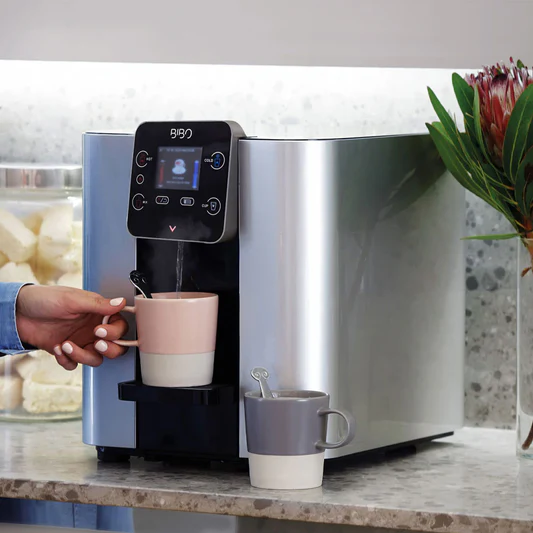Clean and accessible drinking water is a necessity in every Malaysian home and office. With the increasing awareness of health and hydration, water dispensers have become a staple appliance in many households and workplaces. However, choosing the right type of dispenser — countertop or free-standing — can be challenging, especially with the variety of models and features available in Malaysia.
In this article, we’ll compare both types in terms of size, functionality, cost, convenience, and suitability for different Malaysian lifestyles to help you make an informed decision.
Understanding the Basics
Before diving into the pros and cons, let’s define what each type of dispenser offers:
- Countertop Water Dispensers are compact units designed to sit on kitchen countertops or small tables. They’re ideal for areas with limited space.
- Free-Standing Water Dispensers are taller units that stand independently on the floor and often come with a storage cabinet or fridge at the base.
Both types can be connected to a bottled water system or directly to a water pipe, depending on the model.
Space and Design Considerations
One of the biggest factors in choosing a water dispenser in Malaysia is space availability.
- Countertop Units are great for small apartments, studio flats, and office pantries. In urban areas like Kuala Lumpur, where condominium kitchens are compact, a countertop model helps save floor space.
- Free-Standing Units, on the other hand, are better suited for larger homes, corporate offices, or communal areas such as waiting rooms or co-working spaces. They often include additional features such as mini-fridges or storage cabinets, making them multifunctional.
If you have a small kitchen or limited countertop space, a free-standing unit might ironically offer a better spatial solution by occupying a dedicated floor corner instead.
Cost Comparison
Generally, countertop water dispensers tend to be more affordable due to their smaller size and simpler features. They are ideal for budget-conscious consumers or students living in dormitories.
Free-standing water dispensers, however, are slightly more expensive, particularly the models that include advanced features like digital temperature control, UV sterilisation, or built-in chillers.
That said, the price difference often reflects the added convenience and capacity of the free-standing models.
Functionality and Features
Modern Malaysian consumers look for appliances that provide both hot and cold water, energy efficiency, and hygiene.
- Countertop Models usually come with basic hot and cold dispensing functions and a compact water tank. Some premium units also offer temperature control, but these are rare and limited due to space constraints.
- Free-Standing Models have larger tanks, better cooling and heating capabilities, and more advanced features. Some models offer child-lock systems, water filtration, touchless dispensing, and even automatic sterilisation — perfect for households with children or elderly members.
For homes with high water consumption or offices with multiple users, a free-standing unit offers better long-term performance.
Portability and Installation
Countertop dispensers are relatively lightweight and portable, making them easy to move or relocate when needed. This is perfect for renters or people who frequently move homes.
Free-standing units are heavier and bulkier, and may require more effort during installation, especially if they are connected to a direct water line.
However, both types are easy to set up if you’re using bottled water. Malaysia has a robust market for bottled water delivery services, so regular refills are convenient and affordable.
Energy Consumption
Malaysia’s hot climate means that cold water is often preferred throughout the day. Both types of dispensers offer hot and cold functions, but energy usage may vary.
- Free-standing dispensers typically use more electricity due to their size and advanced features.
- Countertop models consume less power and are more energy-efficient for individual or light use.
For eco-conscious consumers, it’s important to look for dispensers with energy-saving modes or certifications. Some brands in Malaysia offer models with power-saving features specifically designed for tropical environments.
Hygiene and Maintenance
Water hygiene is a top concern in Malaysia due to the high humidity, which can lead to mould or bacterial growth.
- Countertop units are easier to clean and maintain because of their smaller build. You can easily wipe down the surfaces and clean the water tank regularly.
- Free-standing units may require more maintenance but often include inbuilt UV systems or self-cleaning features, making them safer for long-term use.
If you prefer less manual upkeep, investing in a self-sterilising free-standing model could be worthwhile.
Which One Works Best for You?
Here’s a quick comparison:
| Feature | Countertop Dispenser | Free-Standing Dispenser |
|---|---|---|
| Space Saving | ✅ Ideal for small kitchens | 🚫 Needs floor space |
| Cost | ✅ More budget-friendly | 🚫 Slightly more expensive |
| Portability | ✅ Easy to move | 🚫 Bulky and heavier |
| Features | 🚫 Basic functionality | ✅ Advanced functions |
| Capacity | 🚫 Lower | ✅ Higher |
| Hygiene Options | 🚫 Manual cleaning required | ✅ UV/self-cleaning available |
| Best For | Small homes, pantries | Families, offices, high use |
Final Verdict
When choosing between a countertop and free-standing water dispenser in Malaysia, your decision should depend on space, usage needs, budget, and features.
For city dwellers in compact homes or budget-conscious users, a countertop dispenser is a smart, space-saving choice. But for larger households or busy offices with higher water demands, a free-standing model offers greater capacity and advanced functionality.
No matter which type you choose, investing in a quality water dispenser ensures you and your family have safe, refreshing drinking water — a must-have in Malaysia’s tropical climate.
